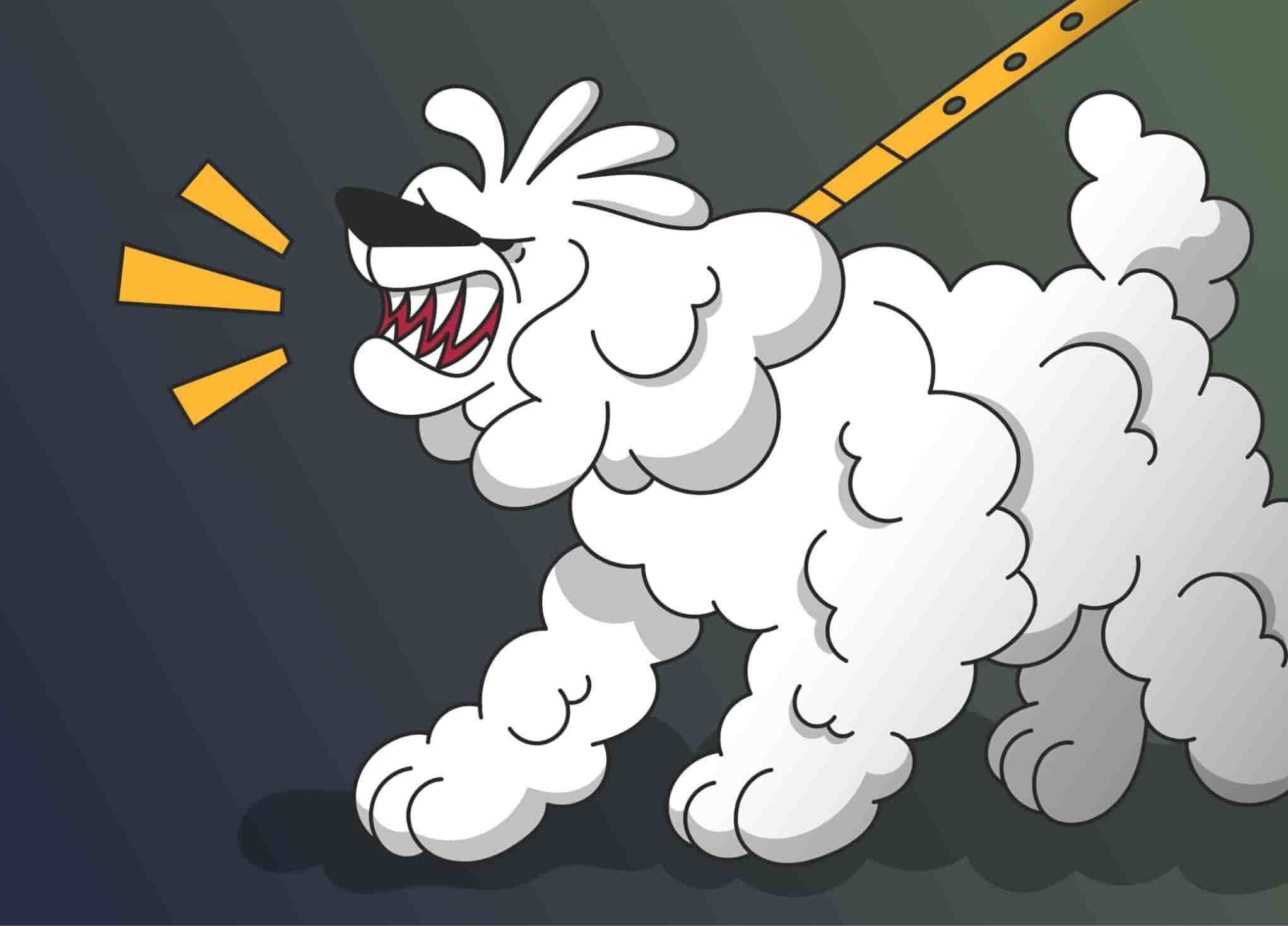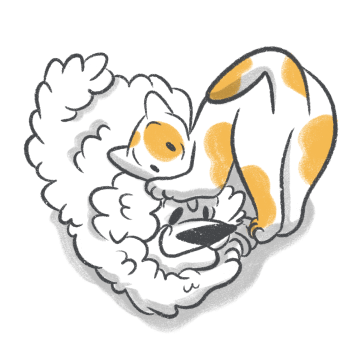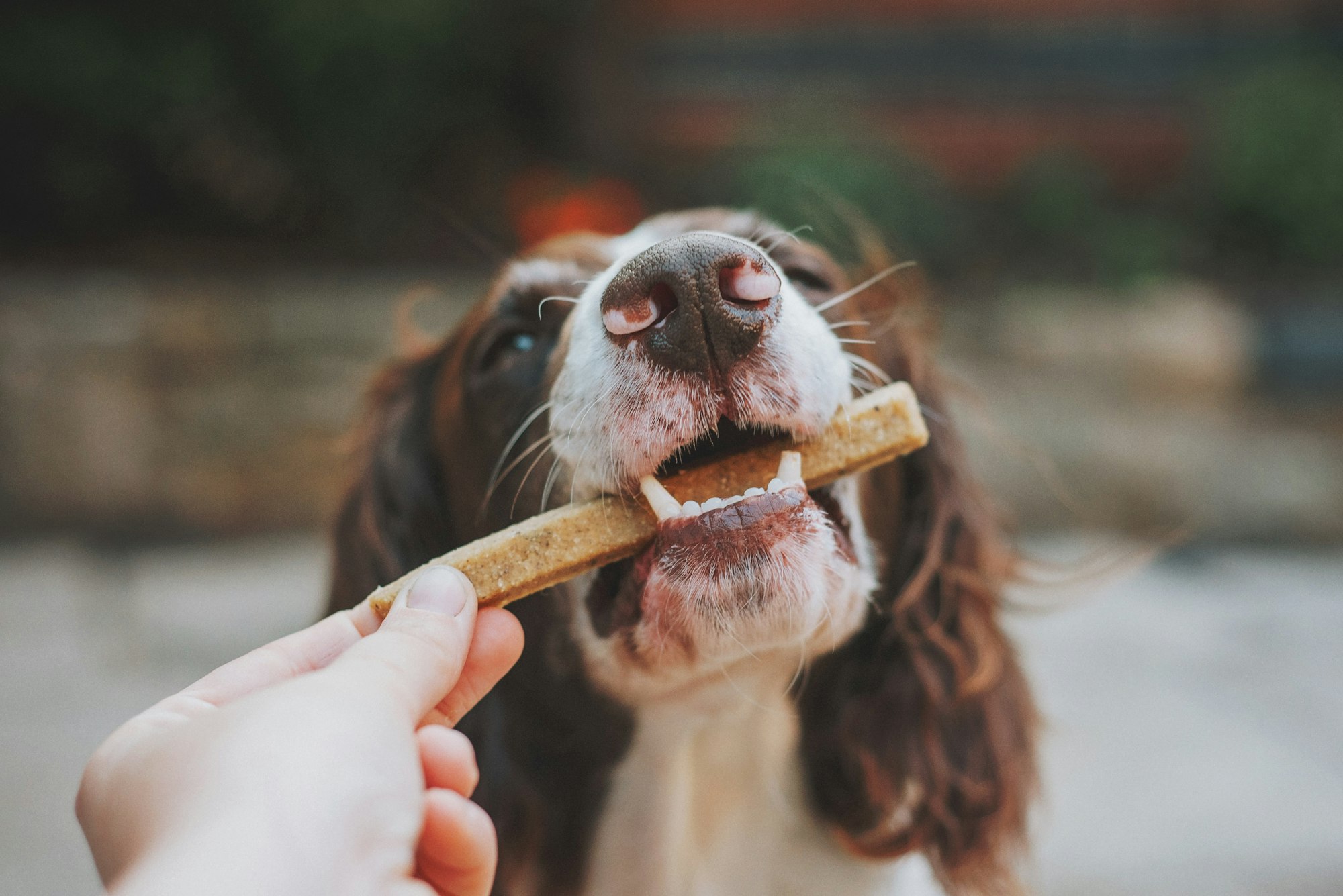Dealing with dog behavioral issues is never easy, but having an aggressive dog is particularly hard.
It frequently passes the point of simply being worried about coming home to a wrecked living room or having an overly yappy pooch. You’re constantly worrying if your dog will attack someone - whether it’s another pet or a stranger, and it can be nerve-racking.
But, even though it’s undoubtedly a major problem, aggression in dogs can be corrected.
In this guide on canine aggression, you’ll find out what causes this type of behavior, how it usually manifests, and, most importantly, how to handle and prevent it.
Stop Googling - Ask a Real Vet
Content:
- What Is Dog Aggression?
- Signs of Aggression in Dogs
- Causes: Why Is My Dog Aggressive?
- Types of Dog Aggression
- Dog Breeds Predisposed to Aggression
- Best Ways to Handle Aggression in Dogs
What Is Dog Aggression?
When someone says their dog is aggressive, the first thing that comes to mind is that they have a dog that bites, but aggression can mean a lot of different things. Some canines keep their aggression toned down and never act out more than the occasional growl, while others can attack other dogs or even people.
Whatever the signs of aggression your dog displays, the most important thing is to understand what triggers the behavior. There are many different reasons why a dog might be angry, and knowing what the underlying cause is will make the dog aggression treatment easier and more efficient.
Even though dog aggression is among the most serious behavioral problems you might have to deal with, it is still just that - a behavioral problem that can be corrected. It is one of the more difficult to handle though.
Signs of Aggression in Dogs
How can you tell if a dog is nervous to the point of being aggressive? What kind of body language and signs is a precursor to an attack? Knowing the answer to these questions can help you anticipate aggressive behavior, and, hopefully, stop it in time.
Apart from Sudden Onset Aggression syndrome, which is a rare condition, an aggressive attack can always be predicted by the specific behavior that precedes it.
Here are the most common signs of aggression in dogs:
- Stiff body posture;
- Ears pinned back;
- Growling;
- Baring Teeth;
- Snarling;
- Bites of different intensity (from light snipping to puncturing bites).
Causes: Why Is My Dog Aggressive?
To be able to truly understand how to stop dog aggression, you’ll need to find out what makes your dog aggressive in the first place.
It’s very rare for a dog to become violent out of nowhere. Most often, the main culprit is a lack of proper socialization and training, but there are other causes that can contribute to this issue. Here are the most common causes of dog aggression:
- Pain or illness;
- Fear;
- Establishing dominance;
- Protecting territory or possessions.
Maybe your feisty furball has a stressor that makes them rage, or they are acting out as a consequence of past trauma. In case your dog suddenly starts acting aggressive, it might be their way of signaling they’re in pain. But how are you to know, for sure, what is the cause of your dog’s violent behavior?
Types of Dog Aggression
More often than not, there might be a common reason for different types of aggressive behavior. For example, a dog that is establishing dominance by being aggressive can exhibit that by attacking other dogs, being unfriendly with new family members, or lashing out when on a leash.
To better understand what exactly motivates your dog’s bad behavior, and, how to prevent and treat your pooch’s aggression, determining the right type of dog aggression is essential.
Possession aggression or food aggression in dogs
Ever wondered how to stop food aggression in dogs? Also known as resource guarding, this type of behavior is centered around a dog’s obsession with certain objects. The item in question might be their favorite toy, their bed, or a bowl of food, but the outcome is always the same. Once another person (or a pet) approaches their belongings, possessive aggressive dogs will immediately react.
Territorial dogs can also react when perceived intruders come to their turf. Depending on the gravity of the problem, the reactions can range from just growling to a full-on attack that includes biting.
Fear aggression in dogs
As with humans, fear is a powerful motivation for dogs. When faced with a scary situation, a nervous dog can turn to a flight or fight response - and fear aggressive dogs choose the latter.
Unlike most other types of dog aggression, fear aggression in dogs has no warning signs. Because they will react only when they think that there is no other option but to defend themselves, these dogs won’t growl, bare their teeth, or snarl before they nip at their source of fear. In most cases, this behavior is caused by a trauma in the dog’s past.
Leash aggression in dogs
If your pooch is friendly and calm most of the time, but starts lunging, barking, and trying to bite as soon as you put on their leash, it’s a clear sign your dog is leash-aggressive. Commonly directed at other dogs, this type of aggressive behavior stems from the fact that your pooch is feeling restrained and frustrated by their leash.
Although it rarely ends with a leash-aggressive dog attacking a canine passerby (after all, you’re holding the other end of the leash), it certainly is frustrating when your dog acts out in public. This often happens when dogs are not trained on time and it can be a type of aggressive behavior that is the easiest to correct.
Social aggression in dogs
It’s all about the instincts in this case. Dogs are social animals who function in packs, meaning that there is a strict hierarchy in the household, even if you’re not aware there is one. Other pets might be lower in status, so a dominant dog will "remind" them who’s the boss every once in a while by displaying aggressive body language.
In some instances, a dog can lash out at people that they consider the runt of their pack. The key here is to be assertive and act as the pack leader, rather than a two-legged beta!
Pain-induced aggression in dogs
Dogs are very good at hiding their pain, but if something is really bothering them, they might start growling or nipping. Although this is perceived as aggressive behavior, it’s actually just a defense mechanism.
Injured dogs, for example, have been known to bite their owners while they were trying to help, so it is important to be careful when handling a dog in pain. If you notice your older dog aggression out of the blue, chances are they are experiencing discomfort, pain, or even an illness.
Rather than trying to correct the behavior, make sure to take them to a vet to eliminate any medical condition that might be triggering it.
Dog Breeds Predisposed to Aggression
There are many misconceptions about different breeds, but the most prevalent ones are about a dog’s aggressive tendencies. You’ve probably heard it already. There are dangerous breeds, such as Pitbulls, Dobermans or Rottweilers, who are specifically bred to be bloodthirsty and aggressive.
The truth is… It’s a myth. There is no such thing as most aggressive dog breeds or least aggressive dog breeds. And it’s not just my personal opinion: scientists have proved this time and time again.
Veterinarians agree when it comes to the so-called most aggressive dog breeds. The only factors that contribute to aggressive behavior that are biological in nature are a dog’s age and sex. For example, a dog that is poorly socialized, unneutered, and becoming sexually mature, might be more prone to aggressive outbursts than, let’s say, a spayed female of the same species.
The key to preventing dog aggression is good socialization, proper training, and lots of love. The breed has nothing to do with it!
Best Ways to Handle Aggression in Dogs
Aggression in dogs is a complex issue. There is no "easy fix" or overnight solution that will turn your pooch into a well-behaved canine, especially if their aggression is in the severe stages. However, with the right approach and a lot of patience, you can learn how to stop dog aggression in its tracks.
As is usually the case with all behavioral issues, prevention is the key. If you nip the problem in the bud, you’ll save yourself the trouble of correcting a major issue down the road. In most cases, being diligent with puppy training is what does the trick. Most aggressive dogs tend to display early signs, which, when noticed on time, can be solved.
These are some tried and true tips that can help prevent the development of aggression in dogs:
- Discourage dominant behaviors
- Watch out for signs of resource guarding
- Pay attention to socialization - both with other pets and strangers
- Use positive reinforcement training
If you adopted an adult dog with behavioral issues or missed the symptoms of aggression in your pet’s puppyhood, there are still ways to stop aggression even when it becomes a serious problem.
Depending on the specifics of your problem, here are some effective solutions that will transform a grumpy pooch into a calm pup.
Situation #1: My dog is aggressive toward strangers
Solution: Understanding how to stop dog aggression toward strangers starts with pinpointing the situation in which the behavior begins. Is it every stranger, or a particular type of people - men, women, kids, people in uniform, etc.? Does your dog get aggressive when a stranger comes to your home, or when they see them on the street?
Answering these questions will help you determine the cause of the problem and the type of dog aggression. It might be dog leash aggression, which requires lead training, or it can be a past trauma or abuse that they connect with a certain type of people. In both cases, positive reinforcement training and gradual desensitization to the stressor are what lead to the best results.
Situation #2: Dog is aggressive toward cats
Solution: Contrary to popular belief, cats and dogs are not natural enemies. In households with multiple pets, both canines and felines, having a pooch that gets agitated around cats can be a major issue.
Depending on the level of aggression your pet displays, learning how to stop dog aggression towards cats can be a matter of safety, so it’s crucial to put in the effort to socialize them. Cats can be finicky and moody, so keep in mind that socializing cats and dogs can be a long process.
Situation #3: Dog aggressive toward owner
Solution: Nothing is so devastating as when your own pet acts aggressively toward you. But you shouldn’t take it personally! In the majority of cases, the aggression your dog is displaying is redirected from another issue, like resource guarding or dog-on-dog aggression.
Of course, there is always a chance that your dog’s unusual behavior is caused by an underlying medical condition. If your pooch started growling or nipping at you suddenly, make sure to rule out any illnesses and injuries first.
Of course, it is not always possible to make the right diagnosis for your furry friend. Especially if you've recently become a pet parent and don't yet know what your dog's normal state and mood is.
But there are many things and life hacks that can make life easier for pet parents. One of them is a subscription to Pet Emergency Fund where for less than $1 per day, you can immediately write your question to a certified veterinarian online who will answer you anywhere and anytime. In addition, this alternative pet insurance can cover your pet's treatment bills if there is some kind of emergency.
For example, your pooch was aggressive and started a fight with another dog on the street. Such fights can end up so badly that a doctor's intervention is required. We know that you definitely want to insure yourself in such situations and protect your kid, so our blog readers will receive an exclusive 27% off. Click here to get a special discount.
Situation #4: My dog is aggressive while eating
Solution: Your pooch doesn’t believe that sharing is caring and starts snapping at anyone who approaches their kibble. How should you deal with possessive aggression in dogs?
The trick is to help them realize that no one is trying to take away their food. Start slowly, by standing near them while they eat, until they get comfortable enough for you to pet them during meals. Do your pets fight over the food you leave out while you’re at work? Use an interactive pet camera that gives treats such as Petcube Bites 2 Lite to remotely monitor their behavior and interrupt their aggression.
Final Thoughts
Of course, you want to be the owner of the perfect dog, but animals are not robots, they cannot be programmed for only positive emotions . Living with an aggressive dog is not easy, but it is possible. This is a problem that can be solved if you use a comprehensive approach. Contact your veterinarian and he will definitely tell you how to properly socialize your dog and how to build training for them.
At first, it can be difficult to cope with aggression, but remember that every pet can change for the better. Don't be afraid and don't give up. You do this to build a close connection and understanding with your kid. Underneath that snarling and snapping, your dog might be just a scared, poorly socialized pup.
You need to remove all stress factors for the dog and create comfortable conditions. Enlist the support of friends or family if you are struggling to get along with your dog. Different causes of aggression require different solutions. This can be anything from a simple change in routine to professional work with a dog trainer. Yes, it can be a lot of work, but it's worth it.
Was this article helpful?
Help us make our articles even better










